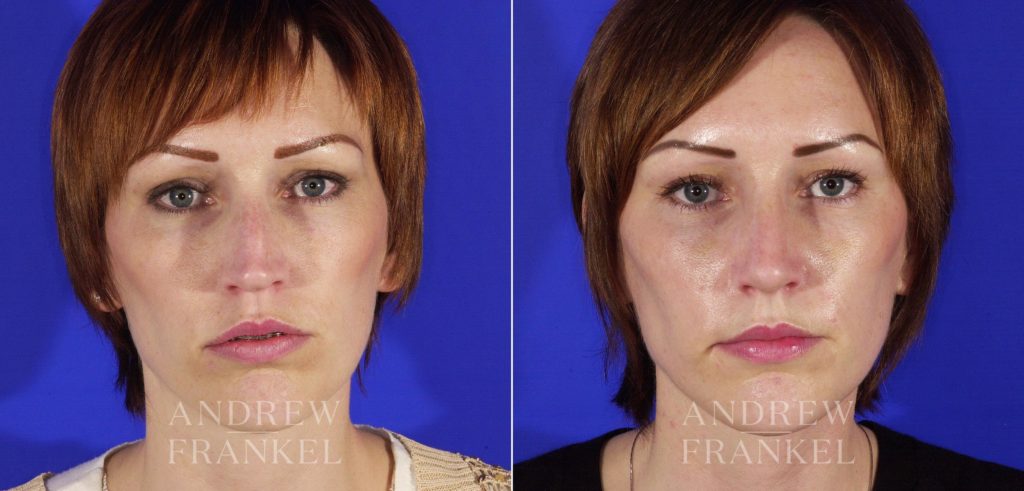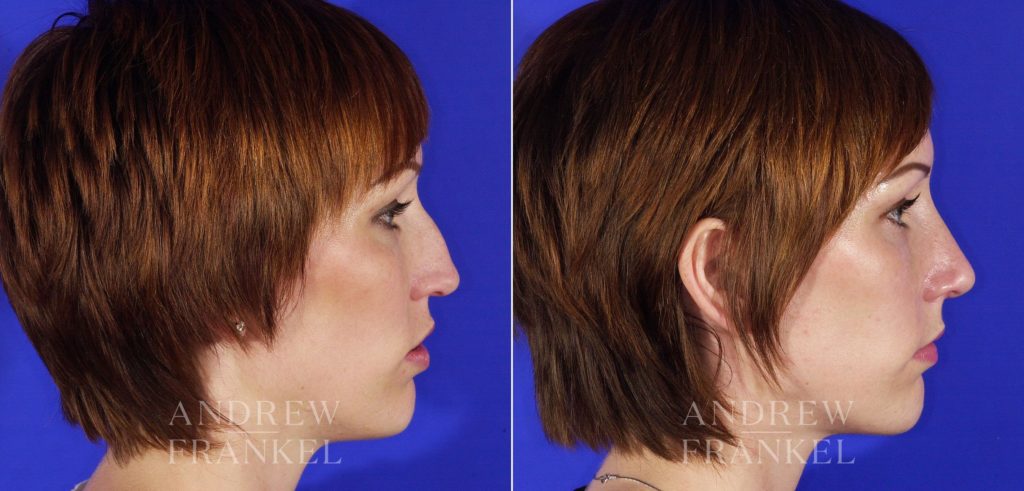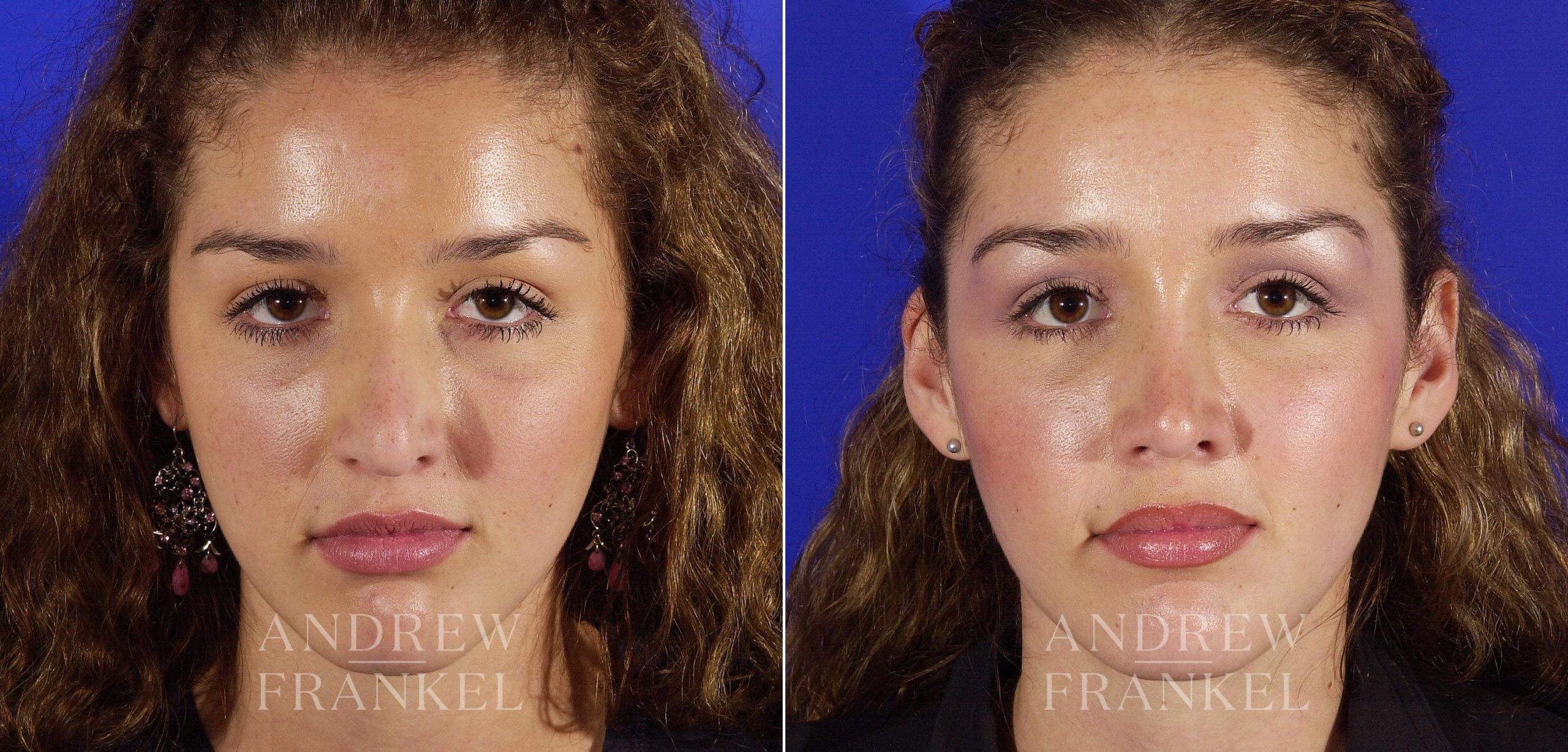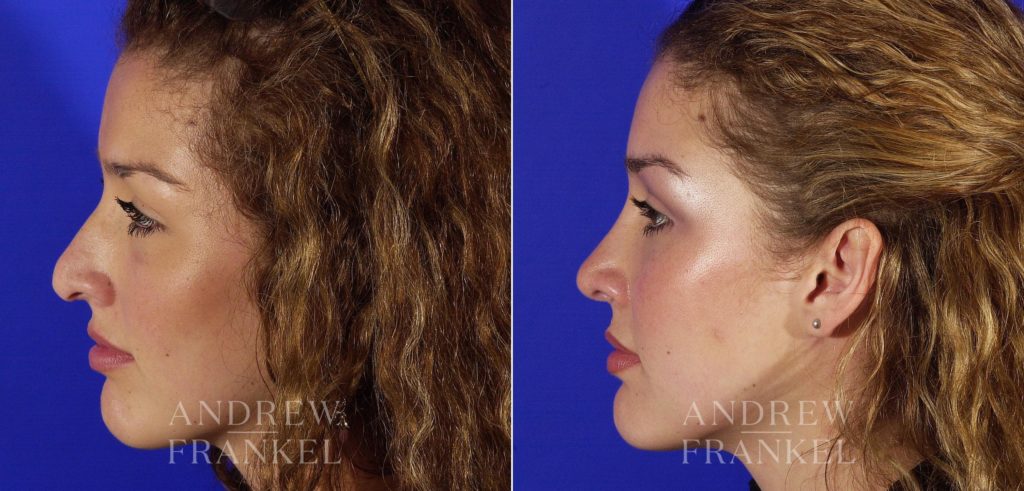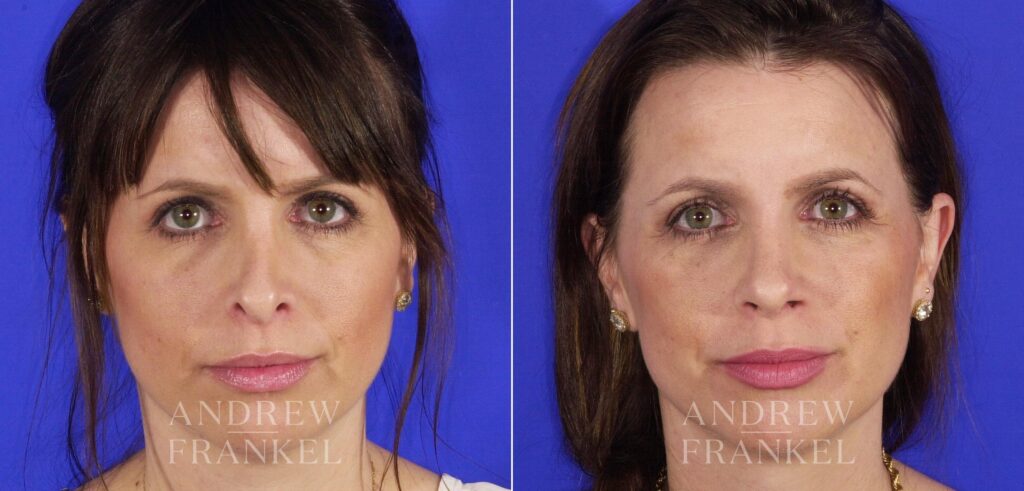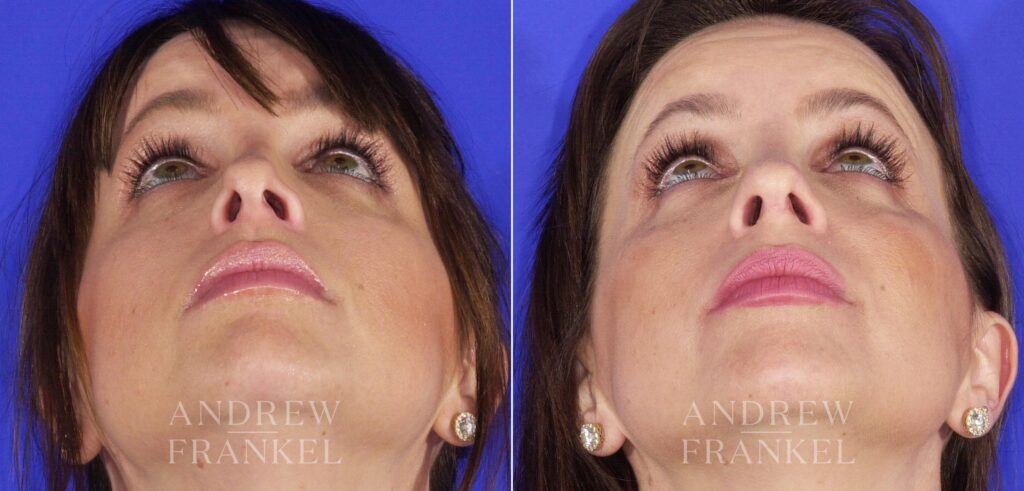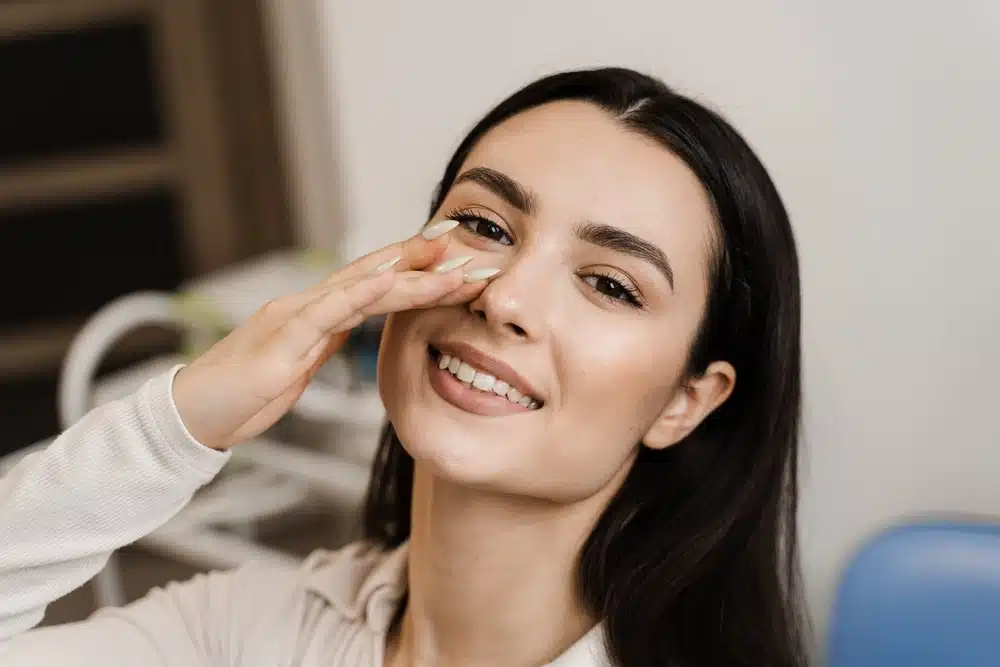
Unhappy with Crooked Rhinoplasty Results? Achieve Symmetry with Revision Surgery
Feeling unhappy with a crooked nose after surgery can be frustrating, but it’s something that can be fixed with the right approach and expertise. Revision rhinoplasty is a procedure that corrects nasal asymmetry, improves breathing problems, and restores facial balance when the original nose job didn’t heal as expected.
If you’re feeling discouraged or unsure about your results, you’re not alone—and you’re not out of options. Dr. Andrew Frankel has helped many patients in the same situation, using a personalized and careful method to correct past work. His goal is not just to fix what went wrong, but to help you feel more comfortable and confident in your appearance moving forward.
Crooked Nose After Surgery? Here’s What Matters Most
- Up to 15% of people who undergo an initial (primary) rhinoplasty will seek additional surgery to improve cosmetic or functional concerns (source: American Society of Plastic Surgeons)
- Swelling can disguise the final shape for up to a year, so judging rhinoplasty outcomes too early often leads to unnecessary worry.
- Cartilage warping, poor healing, trauma during recovery, and insufficient structural support are the leading causes of nose asymmetry after surgery.
- Revision specialists frequently use cartilage grafts from the septum, ear, or rib to rebuild and realign the nasal framework for long‑term stability.
- Choosing a board‑certified facial plastic surgeon with extensive experience in revision rhinoplasty—like Dr. Frankel—is key because these surgeries are more complex and require advanced skills to avoid further complications.
Why Your Nose Might Still Look Crooked After a Nose Job
Even when the first operation went smoothly, subtle forces beneath the skin can pull a once‑straight nose off course. Understanding those forces can help you decide whether a second procedure is truly needed.
Common Causes Like Shifting Cartilage, Scar Tissue, or Poor Healing
Cartilage is flexible and can bend over time, especially if it was weakened or over‑trimmed in the first operation. Scar tissue can tug the tip downward, while uneven healing may leave bumps or depressions that were never visible on the operating table. Minor trauma—such as bumping your nose on a car door—can also nudge delicate nasal bones out of alignment during the healing process.
- Cartilage Warping: Thin or overly aggressive trimming can cause the framework to twist as it heals.
- Scar Contracture: Internal scar tissue can shrink, pulling the nose to one side.
- Post‑Operative Injury: Even a small impact can displace healing bones or grafts.
- Inadequate Support: If the septum or tip cartilages were weakened, gravity may slowly move the nose off‑center.
How Previous Surgeries May Affect Nasal Alignment
Each rhinoplasty changes the internal roadmap a surgeon relies on. Missing cartilage, altered blood supply, and dense scar tissue make it harder to see and correct the true midline. If a previous surgeon removed too much support, revision often involves borrowing cartilage from the ear or rib to rebuild a strong, straight framework.
Can a Crooked Nose Fix Itself After Surgery?
Mild swelling or a small internal bruise can mimic asymmetry for several months. In those cases, the nose may straighten on its own as inflammation subsides. However, true structural deviation rarely corrects itself. If your bridge or tip still looks crooked 12 months after surgery—or if the asymmetry worsens as swelling fades—surgical intervention is usually required to achieve lasting facial symmetry.
Revitalize with Dr. Frankel
Step into a world where beauty blends with science, and let Dr. Frankel guide you to a refreshed, youthful appearance.

Real Cases of Crooked Noses Corrected by Dr. Andrew Frankel
Crooked or asymmetrical noses are among the most challenging—and rewarding—problems in revision rhinoplasty. These patient stories show what is possible when experience, artistry, and precise technique come together.
Case #1: Severe Collapse and Crooked Nasal Bridge Restored
This patient came to Dr. Frankel with a visibly collapsed nasal bridge and an off-center appearance due to a previous septoplasty. Her nose leaned to one side, and the structural damage was causing breathing problems.
To correct this, Dr. Frankel performed a complex revision rhinoplasty using the patient’s own rib cartilage to rebuild and straighten the bridge while restoring symmetry and support. These dramatic results—captured just two weeks post-op—show how even severely crooked noses can be repaired with expert technique.
Case #2: Third Surgery Fixes Asymmetry and Twisted Tip
After two prior rhinoplasties, this patient was left with an uneven, asymmetric nasal structure and a twisted nasal tip. The previous surgery resulted in significant scar tissue, which made correction more challenging.
Dr. Frankel carefully realigned the cartilage and soft tissue to straighten the nose, improve tip definition, and bring everything back into natural alignment. This case shows that even after multiple surgeries, a skilled revision can bring balance back to the face.
Case #3: Hooked and Off‑Center Tip Brought Back Into Balance
This patient had a nasal tip that drooped and pulled to one side. This made the nose appear both crooked and overly prominent.
Dr. Frankel performed an open revision rhinoplasty, repositioning the lower lateral cartilages and reshaping the tip to center it and refine the nostril visibility. The result is a more elegant and balanced profile that no longer draws unwanted attention.
These outcomes highlight that even after one—or several—unsatisfying surgeries, expert revision can create natural, symmetrical results.
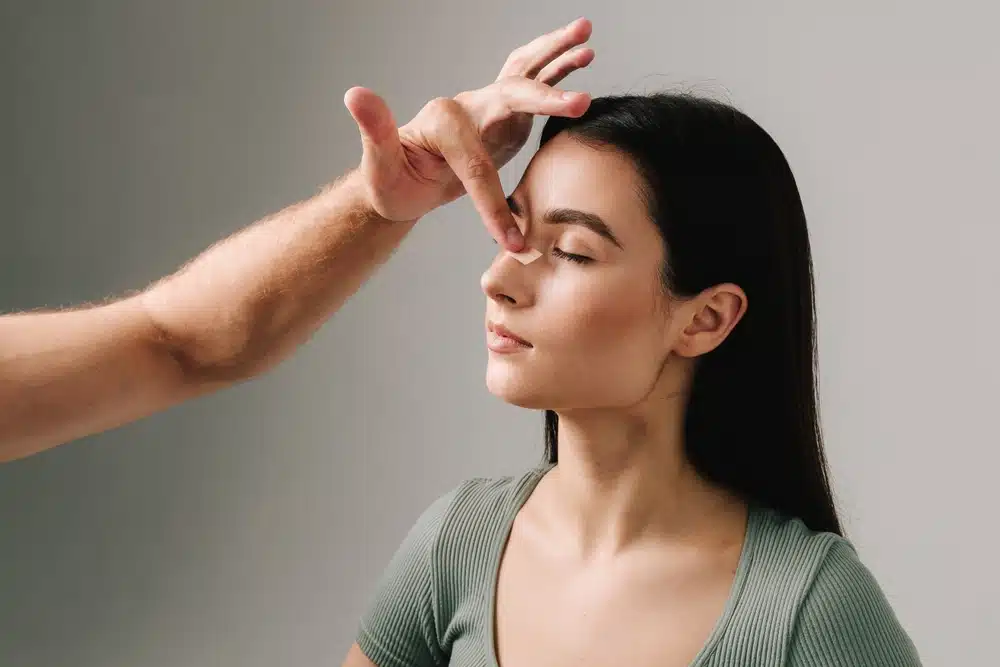
Signs It Might Be Time to Consider Revision Nose Surgery
Most people hope to avoid another operation, yet certain red flags suggest that a second look is worthwhile. If several of the issues below sound familiar, a consultation with a revision specialist can clarify your options.
Your Nose Still Looks Crooked or Off‑Center
After the 12‑month mark, residual swelling should be minimal. Persistent nasal asymmetry at this time likely reflects underlying structural imbalance rather than puffiness that will eventually fade.
One Nostril Doesn’t Match the Other
Uneven nostrils may indicate that tip cartilages healed at different angles or that scar tissue is pulling one side down. This not only affects appearance but can also narrow airflow on the smaller side.
The Tip Looks Pinched or Collapsed
A pinched tip can develop when cartilage is over‑resected in the first procedure. Revision rhinoplasty can restore proper width with grafts, preventing progressive collapse and breathing trouble.
You’re Seeing Bumps, Dents, or Uneven Spots
Irregularities often stem from residual bone or cartilage edges. A skilled surgeon can smooth these areas and camouflage minor contour defects with grafts or soft‑tissue techniques.
Breathing Feels Blocked on One Side
Functional concerns often accompany crooked cosmetic results. Straightening the septum, reinforcing weak valves, or correcting collapsed cartilage can reopen obstructed airways.
You Bumped Your Nose After Surgery
An accidental impact can shift fragile nasal bones in the first six weeks. If the shape changed immediately after trauma and never returned to baseline, surgical correction may be the only solution.
It’s Been Over a Year and Nothing Improved
At the 12‑ to 18‑month mark, most swelling has resolved. Lingering asymmetry suggests that waiting longer will not produce meaningful change.
You’re Still Hiding from Photos or the Mirror
If self‑consciousness persists despite adequate healing time, a professional assessment can help ensure the concern is objective—not just perceived. During an in‑person exam, Dr. Frankel evaluates nasal angles, airflow, and healed tissue to determine whether a true structural asymmetry remains.
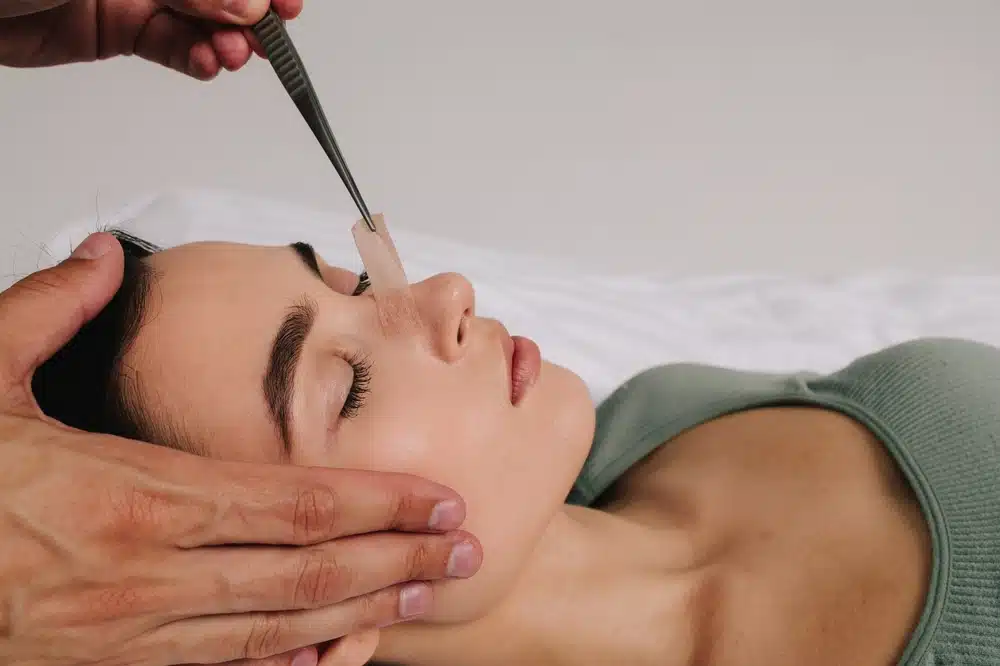
How Long Should You Wait Before a Revision for Crooked Nose?
Surgeons generally recommend waiting at least one year—sometimes 18 months—after the initial rhinoplasty before pursuing a revision. This delay allows swelling to subside, scar tissue to soften, and nasal anatomy to stabilize, all of which make surgical planning more predictable. However, severe breathing issues or obvious structural collapse may justify earlier intervention. An in‑person evaluation with a rhinoplasty specialist will determine the safest timeline for your unique case.
Understanding Facial and Nasal Asymmetry During Recovery
Mild facial asymmetry is normal; nearly everyone has one side that differs slightly from the other. Swelling can exaggerate these differences, especially in the first few weeks after surgery. Sleeping with your head elevated, avoiding salty foods, and following all post‑operative instructions can help reduce swelling and reveal the true contours sooner. Remember, patience is part of the healing process, but so is recognizing when the nose has settled into a shape that will not self‑correct.
Choosing the Right Surgeon to Fix a Crooked Nose After Rhinoplasty
Revision rhinoplasty is sometimes called the most demanding procedure in facial plastic surgery because scar tissue, missing cartilage, and altered anatomy leave little room for error. Look for:
- Board certification in facial plastic and reconstructive surgery.
- A high volume of revision cases with before‑and‑after photos that resemble your concerns.
- Experience with advanced grafting techniques, including rib cartilage when needed.
- Transparent communication about risks, expected outcomes, and recovery timelines.
Dr. Andrew Frankel—founder of Lasky Clinic in Beverly Hills—meets these criteria. With decades of focused experience in revision rhinoplasty, he blends meticulous surgical technique with an artistic eye for facial harmony. Patients travel from across the country to benefit from his individualized plans and commitment to natural‑looking results.
Complex Nasal Cases Need a Rhinoplasty Expert — Contact Dr. Andrew Frankel in CA
A crooked nose can undermine confidence every time you see your reflection. Revision rhinoplasty—performed by a surgeon who specializes in complex nasal anatomy—can finally deliver the symmetry you expected from the start. If you are experiencing nose asymmetry, uneven nostrils, or lingering breathing issues months after surgery, schedule a personal consultation with Dr. Andrew Frankel in Beverly Hills today.
Together you can review your concerns, explore surgical options, and design a plan that brings your features back into harmony.Ready to move forward? Call 310‑870-3893 or request an appointment through the revision rhinoplasty page. The next chapter of your facial symmetry starts now.
